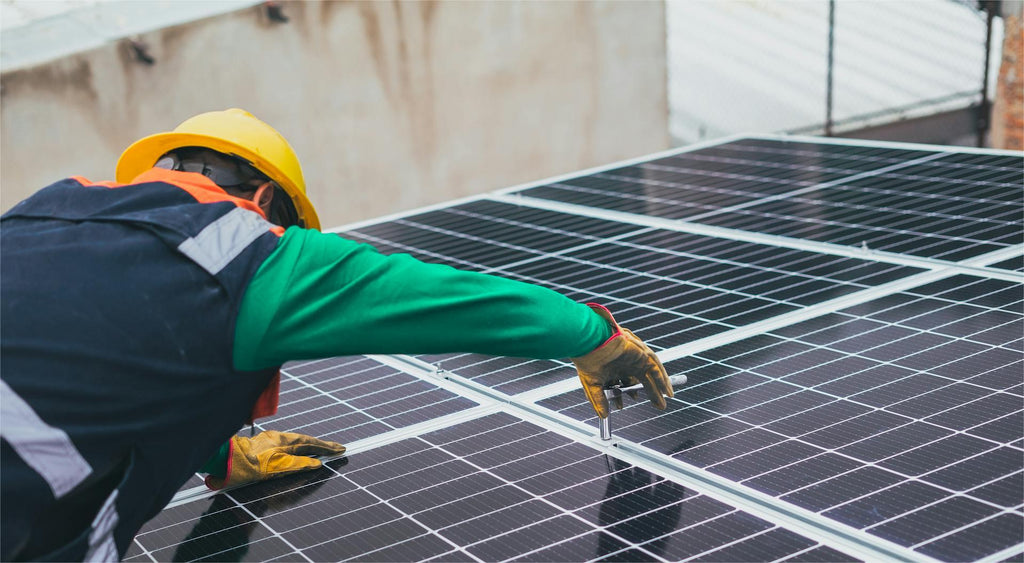Unlock the Secrets to Making Your Solar Inverter Last a Lifetime!
Solar inverters are the unsung heroes of renewable energy systems, transforming the direct current (DC) generated by solar panels into alternating current (AC) that powers our homes. Their efficiency directly impacts energy performance, making them crucial for maximizing solar energy benefits. However, like any electronic device, solar inverters require regular maintenance to ensure their longevity and reliability. Without proper care, their performance can deteriorate, leading to costly repairs or replacements. In this article, we will delve into essential maintenance practices that can significantly extend the lifespan of your solar inverter durability, helping you harness the full potential of your solar energy system.

Understanding Solar Inverter Durability
A solar inverter is a device that plays a vital role in a solar energy system. Its primary function is to convert the DC electricity generated by solar panels into AC electricity suitable for use in homes and businesses. The durability of solar inverters can be influenced by several factors, including environmental conditions, installation quality, and the inverter's design and technology. Over time, inverters can face challenges such as overheating, dust accumulation, and wear and tear, all of which can compromise their performance. Understanding these factors is key to implementing effective maintenance strategies that ensure your inverter remains functional and efficient throughout its lifespan.
Essential Maintenance Tips for Longevity
To keep your solar inverter in optimal condition, consider these top 10 maintenance essentials:
1. Regular Inspections
Routine inspections are crucial for identifying potential issues before they escalate. Regularly check for any unusual sounds, error messages, or warning lights on your inverter. By being proactive, you can address minor problems early, potentially saving yourself from more significant repairs down the line.
2. Clean the Inverter
Dust and debris can accumulate on your inverter, which can hinder its performance. Cleaning the inverter periodically ensures that it runs efficiently. Use a soft brush or cloth to gently remove dust, and avoid using water or harsh chemicals that could damage the device.
3. Check Connections
Electrical connections should always be secure and free from corrosion. Loose or corroded connections can cause performance issues or even electrical hazards. Regularly inspect all wiring and connectors to ensure they are tight and clean.
4. Monitor Performance
Keep track of your inverter's performance metrics, such as energy output and efficiency ratings. Many modern inverters come with monitoring systems that allow you to assess their performance remotely. If you notice any anomalies, investigate further to identify potential problems.
5. Ensure Proper Ventilation
Inverters generate heat during operation, so adequate airflow is essential to prevent overheating. Make sure your inverter is installed in a well-ventilated area, and avoid placing it in enclosed spaces where heat can build up.
6. Keep Away from Direct Sunlight
While solar inverters are designed to withstand heat, excessive exposure to direct sunlight can negatively impact their efficiency. If possible, position your inverter in a shaded area or use protective covers to shield it from the sun's rays.
7. Update Firmware
Inverters often come with firmware that can be updated to improve performance or fix bugs. Regularly check for firmware updates from the manufacturer and apply them to ensure your inverter operates at its best.
8. Professional Servicing
In addition to your own maintenance efforts, scheduling periodic professional servicing can provide peace of mind. A qualified technician can conduct thorough inspections, address complex repairs, and offer expert advice on maintaining your inverter.
9. Protect from Lightning Strikes
Electrical surges from lightning strikes can cause significant damage to solar inverters. Installing surge protection devices can safeguard your inverter against sudden voltage spikes, ensuring its longevity and reliability.
10. Warranty and Documentation
Finally, keep detailed records of all maintenance activities, including inspections, repairs, and any professional servicing. Understanding your warranty terms is equally important; knowing what is covered will help you make informed decisions and ensure you receive any necessary repairs or replacements under warranty.
Maximizing Your Solar Inverter's Lifespan
In conclusion, maintaining your solar inverter is essential for maximizing its durability and performance. Regular inspections, cleaning, and monitoring can prevent issues before they arise, while professional servicing ensures that your device is always in top condition. By implementing these maintenance essentials, you can extend the lifespan of your solar inverter and enjoy the full benefits of your solar energy system. Start taking these steps today, and unlock the potential of your investment in renewable energy!








